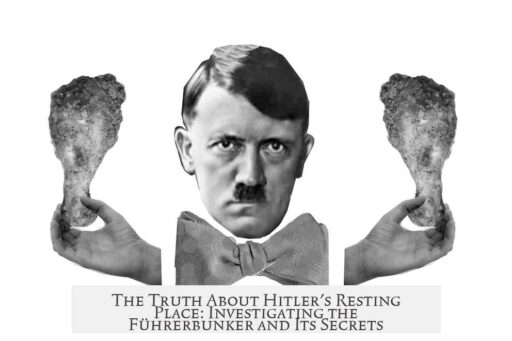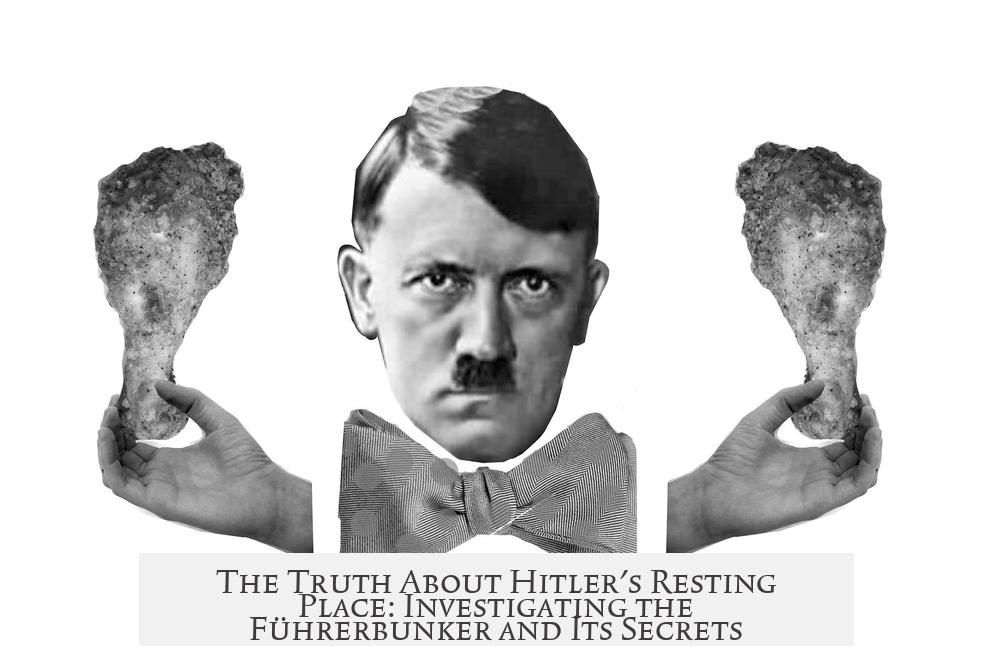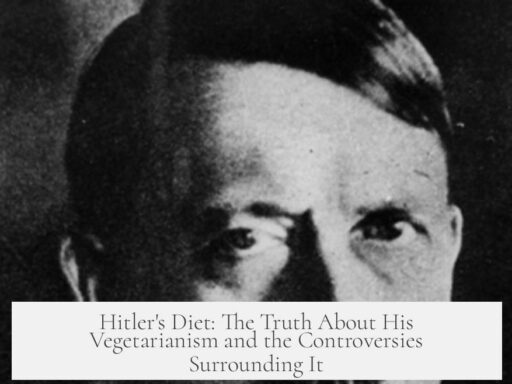Hitler does not have a grave or memorial plaque. After his death in 1945, his remains were never given a formal burial site that is publicly known or recognized.
Following Hitler’s suicide in the Führerbunker, the Soviet forces recovered partial remains of Adolf Hitler, Eva Braun, and the Goebbels family. These remains were initially buried at a KGB facility in East Germany. The Soviets maintained custody of the remains until 1970, when they were reportedly cremated and the ashes were scattered into a nearby river. This action ensured no physical gravesite or memorial would exist to mark Hitler’s death.
In 1946, an excavation at the Führerbunker uncovered skull fragments that Soviet authorities attributed to Hitler. These fragments remain stored in Russian archives and have not been publicly disclosed or returned to Germany.
In Germany today, any official grave or tribute to Hitler is forbidden and culturally unacceptable. The site of the Führerbunker contains no monument. Instead, an information panel exists to discourage myths or glorification surrounding Hitler and the Nazi regime. This approach reflects Germany’s ongoing commitment to confronting its past without romanticizing it.
- No public grave or plaque for Hitler exists.
- Partial remains were buried, then cremated and disposed of by Soviet forces.
- Skull fragments are kept in Russian archives.
- Modern Germany rejects memorializing Hitler.
- The Führerbunker site has an educational panel countering mythologizing.
Does Hitler Have a Grave? The Truth Behind History’s Most Infamous Final Resting Place
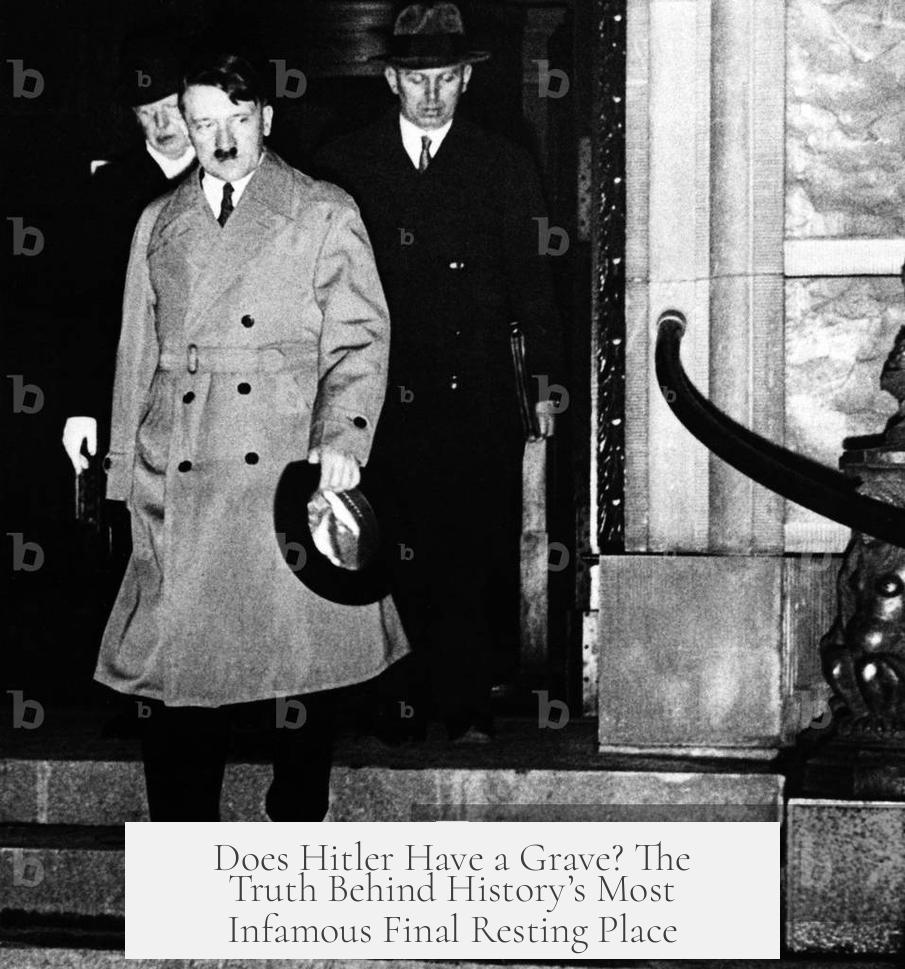
No, Adolf Hitler does NOT have a grave or a plaque marking his final resting place. Sounds surprising, right? For someone whose actions shook the world, you’d expect some kind of tombstone or memorial—whether out of respect or infamy. But history, especially the aftermath of WWII, has dealt with Hitler’s remains in a way few might expect.
So, where did the remains of the man who sparked one of the deadliest conflicts in history actually end up? And why is there no grave? Let’s unravel the facts.
The Aftermath: What Really Happened in 1945?
In the chaotic final days of World War II, Hitler and Eva Braun—his wife for less than 40 hours—committed suicide inside the infamous Führerbunker beneath Berlin. That much we know. But what happened to their remains afterward gets murky and a bit eerie.
The Soviet forces who captured the bunker didn’t exactly treat the remains like those of a dignitary or historical figure worth memorializing. Instead, they gathered the bits and pieces of remains belonging to Hitler, Eva Braun, and the Goebbels family who also perished around the same time.
This gruesome collection of ashes and fragments went to a top-secret KGB facility located in East Germany. There, the Soviets buried the remains, but not for all that long. In 1970, when the Soviets planned their exit from East Germany, they decided to burn these remains completely and scattered the ashes in a nearby river. Stream disposal: check.
The Führerbunker Excavation Mystery
A more detailed excavation of the bunker site took place in 1946—a year after Hitler’s death. Among the recovered items were skul fragments identified by Soviet officials as Hitler’s own. These fragments didn’t get a burial or a public display. Instead, they became part of the Russian archives and remain locked away tightly to this day.
Imagine that: the skull piece of one of history’s most notorious figures sitting quietly in a vault, probably gathering dust, somewhere in Russia.
Why No Grave or Plaque? The German Perspective
Germany’s stance on Hitler’s legacy is clear and purposeful: There is no place for glorification or memorials that could inspire myth-building or Nazi nostalgia.
Germany has strict laws against Nazi symbols and propaganda. Given the deep wounds caused by Hitler’s regime, establishing a grave or memorial dedicated to him would be unthinkable—not just ethically but legally. Such a site could inadvertently become a pilgrimage spot for extremists.
Instead of a gravesite, German authorities installed an information panel near the former Führerbunker site. Its purpose is straightforward: to counter myth building and nostalgic narratives. It’s a sober reminder, not a shrine.
This panel helps visitors understand the historical weight of the location without sugarcoating or mythologizing it. It’s the historical equivalent of “don’t try this at home”—a way to keep the past real, hard, and instructive.
What Does This Mean for History Buffs and Curiosity Seekers?
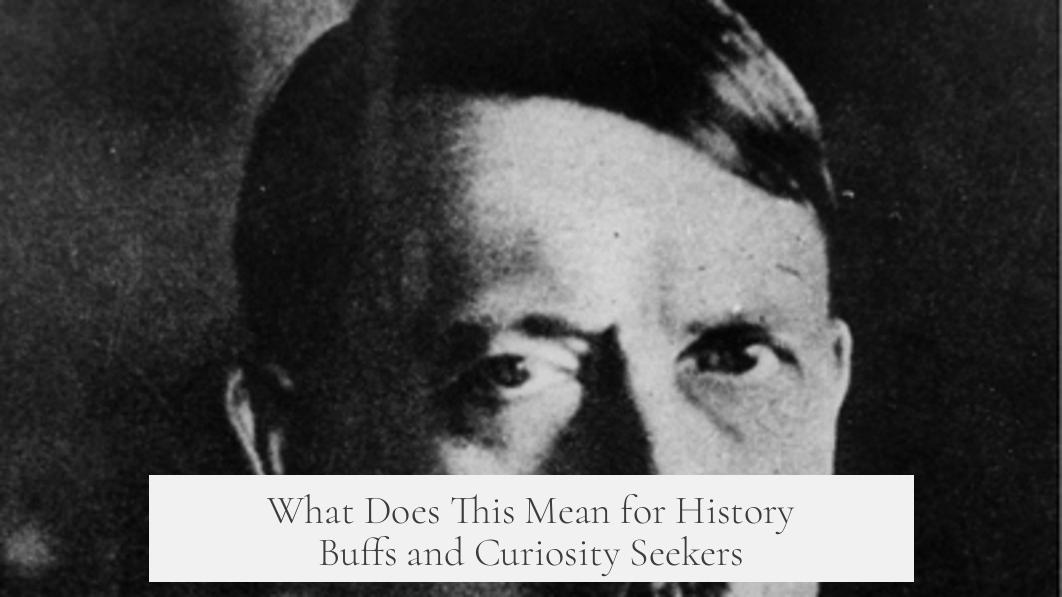
There’s no tombstone hunt or eerie grave visit for the curious. Instead, the story of Hitler’s remains is a lesson on how societies deal with dark legacies.
- No grave, no monument: That’s how history draws a line, choosing silence over sensationalism.
- Remains destroyed: The Soviets ensured Hitler’s physical remains won’t become relics or rallying points.
- Information over idolization: Germany educates rather than venerates.
Interesting Side Note: The Power of a Non-Existence
Not having a grave – for someone as infamous as Hitler – says a lot about how we remember history. Sometimes, what’s NOT there speaks louder than any stone or plaque ever could.
When you visit Berlin today, there’s no mausoleum to Hitler. No visits to honor the man. Instead, brave efforts exist to educate visitors through factual information and a clear rejection of extremist nostalgia. It’s a conscious decision by history, culture, and law combined.
Some Food for Thought
- How does the lack of a grave affect the way societies remember controversial figures?
- Can a responsible approach to history involve erasing physical reminders but preserving lessons?
- Does the mystery of hidden remains add to the myth or help dispel it?
These questions linger, urging us to think about history not just as stories, but as responsibilities.
Final Takeaway
Does Hitler have a grave? No. His remains were buried, later burned, and discarded. Skull fragments lie hidden in Russian vaults, inaccessible to the public. Germany refuses to commemorate him with a grave or plaque, instead opting for education and prevention of dangerous myths.
This approach reflects a mature society grappling with a dark chapter without glorifying or forgetting it. It’s a reminder that sometimes, no monument is the most powerful monument of all.
So, next time someone wonders where Hitler rests, the answer is clear and unsettling: nowhere in the public eye, nowhere to be revered, just fragments hidden in archives and memories guarded by lessons of the past.
